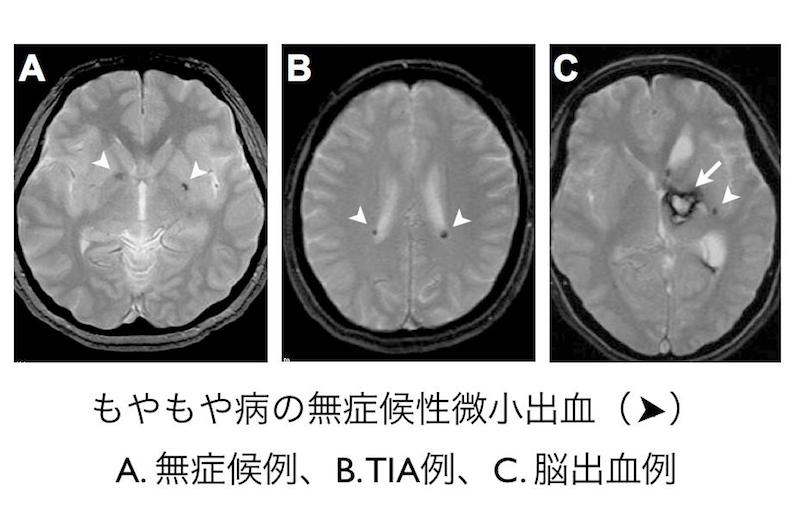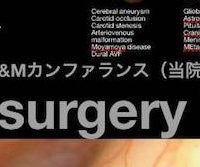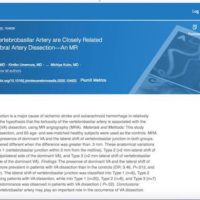もやもや病は、両側内頚動脈に進行性の狭窄が生じて脳梗塞や脳出血を招く疾患です。小児、成人両者に発生することが特徴で、特に成人で発生することが多い脳出血は患者さんの予後を悪化させることが多く、今後、診断や治療方法をさらに改善することが重要です。
最近、T2*強調MRIが「無症候性微小出血」の検出に有用であることが判明していますが、その臨床的意義については不明な点が多かったのも事実です。
今回、われわれは、この「無症候性微小出血」が成人もやもや病の約30%に認められること、平均3年半の経過観察中に約7%で新たな「無症候性微小出血」が生じること、「無症候性微小出血」の存在が将来の脳出血の予測因子であることを明らかにしました(Kuroda S et al. Stroke 44:516-518, 2013)。
詳細は以下のURLをご参照下さい。
http://www.ncbi.nlm.nih.gov/pubmed/23223508

Clinical significance of silent microbleeds is unknown in moyamoya disease. This study was aimed to clarify the incidence, locations, and longitudinal course. This prospective cohort study included 78 nontreated patients with moyamoya disease. The incidence and locations of silent microbleeds were evaluated on T2*-weighted MRI. MR examinations were repeated every 6 or 12 months during a mean follow-up period of 43.1 months. T2*-weighted MRI identified silent microbleeds in 17 (29.3%) of 58 adult patients with moyamoya disease, but in none of 20 pediatric patients. During follow-up periods, de novo silent microbleeds developed in 4 (6.9%) of 58 adult patients. Hemorrhagic stroke occurred in 4 patients (6.9%), all of who had silent microbleeds on initial examination. The presence of silent microbleeds was a significant predictor for subsequent hemorrhagic stroke in adult moyamoya disease (P<0.001). Careful and long-term follow-up of silent microbleeds would be essential to improve their outcome in adult patients with moyamoya disease.









